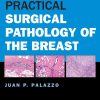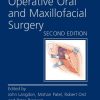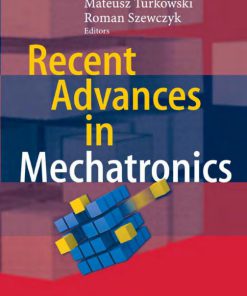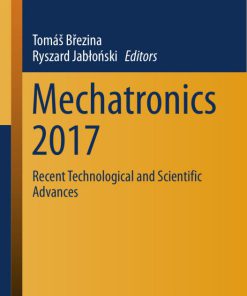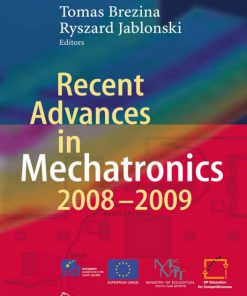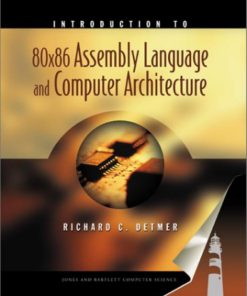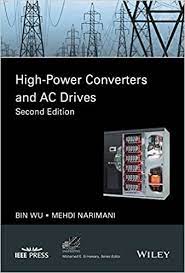(Ebook PDF) Advanced Mechatronics Solutions 1st edition by Ryszard Jabłoński, Tomas Brezina 3319239236 9783319239231 full chapters
$50.00 Original price was: $50.00.$25.00Current price is: $25.00.
Authors:Ryszard Jabłoński, Tomas Brezina (eds.) , Series:Mechatronics Engineering [143] , Author sort:Ryszard Jabłoński, Tomas Brezina (eds.) , Languages:Languages:eng , Published:Published:Oct 2015 , Publisher:Springer (2017)
Advanced Mechatronics Solutions 1st edition by Ryszard Jabłoński, Tomas Brezina – Ebook PDF Instant Download/DeliveryISBN: 3319239236, 9783319239231
Full download Advanced Mechatronics Solutions 1st edition after payment.
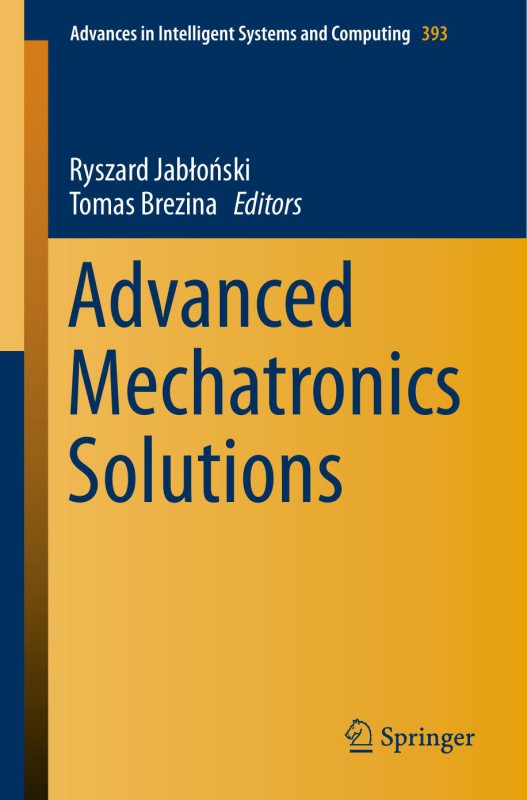
Product details:
ISBN-10 : 3319239236
ISBN-13 : 9783319239231
Author : Ryszard Jabłoński, Tomas Brezina
Focusing on the most rapidly changing areas of mechatronics, this book discusses signals and system control, mechatronic products, metrology and nanometrology, automatic control & robotics, biomedical engineering, photonics, design manufacturing and testing of MEMS. It is reflected in the list of contributors, including an international group of 302 leading researchers representing 12 countries. The book is intended for use in academic, government and industry R&D departments, as an indispensable reference tool for the years to come. Thid volume can serve a global community as the definitive reference source in Mechatronics. The book comprises carefully selected 93 contributions presented at the 11th International Conference Mechatronics 2015, organized by Faculty of Mechatronics, Warsaw University of Technology, on September 21-23, in Warsaw, Poland.
Advanced Mechatronics Solutions 1st Table of contents:
Part I Automatic Control
1 The weak isolability of the structure of binary residuals of multiple faults
1 Introduction
2 Preliminaries
3 The multiple fault distinctiveness matrix
4 The binary isolability metric
5 Illustrative example
6 Final remarks
References
2 Operational limits in vibration diagnostics
1 Introduction
2 Assessment of vibrations of the hydraulic unit electric motor
3 Statistical determination of operational limits
4 Conclusion
References
3 Securing communication layer of uBUS protocol
1 Introduction
2 Communication protocol uBUS
2.1 MODBUS protocol
2.2 uBUS protocol
3 uBUS application protocol specification
3.1 MultiSlave extension
3.2 Securing communication of uBUS protocol
3.3 Implementation of 32-bit encryption on the MultiSlave device
4 Implementation of uBUS protocol in real systems
4.1 Solar water heating system
4.2 System for acquisition of environmental data via wireless sensors
5 Conclusions
Acknowledgement
References
4 Application of Neural Networks in Fault Classification ofa kind of Clutch Mechanism Retainer
1 Introduction
2 Material and method
3 Signal Processing and Feature Extraction
4 ANFIS Modeling
5 Discussion and Conclusions
References
5 Model-based Predictive Control of IC Engine Involvingan Algebraic Link between Plant Inputs and Ou
1 Introduction
2 Predictive model of an IC engine
2.1 LOLIMOT
2.2 Generating the predictive model of an IC engine
2.2.1 Tested Engine
2.2.2 Simulation model
2.2.3 Predictive model based on LOLIMOT
3 Model-based predictive control of an IC engine
4 Simulation results
5 Experimental results
6 Conclusions
Acknowledgment
References
6 Modeling of Kinematics, Dynamics and Design of Electronics Control Unit for an Experimental Robot
1 Introduction
1.1 Robots with hybrid locomotion
1.2 Goals of the project
2 Design of the experimental robot
2.1 Study of design variants and modelling of kinematics and dynamics
2.2 Mechanical design and styling
2.3 Sensors and distributed control
3 Conclusion
Acknowledgement
References
7 Sensorless Speed Control of BLDC Motor using EKF with Computed Inputs and Disturbance
1 Introduction
1.1 Sensorless control of BLDC
2 Implementation of sensorless control using EKF
2.1 Model of BLDC motor
2.2 Nonlinear state space model
2.3 Rotor angle EKF estimation
2.4 Simulation and experimental results
3 Conclusion
Acknowledgement
References
8 Step response identification of inertial model foroscillatin
1 Introduction
2 Oscillating model identification
3 Concluding remarks
References
9 An Improved Extraction Process of Moving Objects’ Silhouettes in Video Sequences
1 Introduction
2 Extraction Process
1.1 Determination of Moving Regions
1.2 Removal of Small Connected Regions
1.3 Extraction of Moving Objects
3 Experimental Results
4 Conclusions
References
10 Optimal Sensor Placement for Fault InformationSystem
1 Introduction
2 Theoretical background
2.1 Fault Information System
2.2 The measure of fault isolability for Fault Information System
3 Optimisation Problem Formulation
3.1 Solving problem with Branch-and-Bound algorithm
4 Three Tank System example
5 Conclusion
References
11 A comparison of industrial installations modelling methods for the purpose of HAZOP support
1 Introduction
2 Description of industrial installation example
3 Modelling of example installation using PExSim package
4 Modelling of example installation using process graph
5 Modelling of example installation using DFM graph
6 Summary
References
12 The concept of public cargo transporting pipeline system
1 Introduction
2 General assumptions for the system
3 The concept and optimal geometry of capsules
4 Modelling the system dynamics
5 Terminals
6 Propelling of capsules
7 Guiding the capsules in the pipe
8 Other elements necessary to safe operation of the system
9 Conclusions
References
13 Assessment of the measurement method precision in interlaboratory test by using the robust “Alg
1 Introduction
2 Rules of the scattering data assessment by using of robust methods
3 Robust analysis “Algorithm S”
4 Example of using “Algorithm S”
5 Summary
References
14 Innovative car back door actuator
1 Introduction
2 Inventive methods
3 Design process
3.1 Requirements for the design
3.2 Concept evaluation
3.3 Modelling and optimization
3.4 Control system and software design
4 Final Concept – Prototype
5 Conclusion
References
Part II Biomedical Engineering
15 Magnetic Resonance quantification of myocardial perfusion reserve using Fermi function model: com
1 Introduction
2 Materials and methods
3 Theory and Calculation
4 Results
5 Discussion
References
16 Impact of breathing mechanics, body postureand physique on heart rate variability
1 Introduction
2 Method
3 Results
4 Discussion
5 Conclusion
References
17 Dependence of sleep apnea detection efficiency on the length of ECG recording
1 Introduction
2 Material and methods
2.1 Computer program features
2.2 Data description
2.3 Heart rate variability indices
2.4 Classification with Support Vector Machine method
3 Results
4 Discussion and conclusions
References
18 Sensitivity Analysis of the Material Parameters of the Ceramics on the Inner Radius of the Hip Jo
1 Introduction
2 Experiments
3 Calculation of the material parameters of the bioceramics
4 Conclusion
References
19 Multibody model of dynamics and optimization of medical robot to soft tissue surgery
1 Introduction
2 Optimization model of Robin Hearth 1 medical robot to softtissue surgery
3 Kinetics model of Robin Hearth 1 with PID controller
4 Conclusions
References
20 Characterization of low-LET radiation fields forirradiation of biological samples using recombina
1 Introduction
2 Ionization Chambers
3 Material and methods
4 Influence Of The Elements Of The Stand
5 Results of RIQ measurements
6 Discussion and conclusions
References
21 Modular measurement system dedicated as diagnostic equipment in biomedical research studies
1 Introduction
2 System Architecture
3 Detection of Cardiac Insufficiency
4 Development directions
5 Conclusions
References
22 Conception of Turning Module for Orthotic Robot
1 Introduction
1.1 The ‘Veni-Prometheus’ System for Verticalization and Aiding Motion
1.2 Turning methods in contemporary orthotic robots and exoskeletons
2 Conception of the turning module kinematics
2.1 Direct control of the lower limbs
2.2 Indirect control of the lower limbs
3 Discussion
4 Conclusions
References
23 Evaluation of cost-efficient auditory MEG stimulation
1 Introduction
2 Development of auditory source for MEG
2.1 Properties
3 Results
4 Conclusions
Acknowledgement
References
24 Detection and evaluation of breast tumors on the basis of microcalcification analysis
1. Introduction
2. The algorithm of identification of microcalcification localization.
3. The results of identifying the localization of microcalcifications.
4. Application of artificial nenural networks in microcalcificatins classification.
5. The results of microcalcifications classification.
6. Summary.
References
25 Control Bilateral Teleoperation By Compensatory ANFIS
1 Introduction
2 ANFIS Controller With Compensatory Fuzzy
2.1 Learning Algorithm
3 Description of the Teleoperation System
4 Experiment Results
5 Conclusion
References
26 Validation of Finite Element Method Solver for Utilization in Eddy Current Tomography
1 Introduction
2 Validation of magneto dynamics solver on the Helmholtz coilmodel and on long coil model
2.1 Utilized model of Helmholtz coils
2.2 Utilized model of long coil
2.3 Simulation results
2.4 Results analysis and comparison with analytical values.
3 Tests for eddy current depth in materials
3.1 Utilized model
4 Conclusion
References
27 Numerical simulation of the effect of supplying arteries occlusion on cerebral blood flow
1 Introduction
2 Material and methodology
3 Results
4 Discussion
References
28 X-ray and neutron radiography studies of archeological objects
1 Introduction
2 Methodology
3 Results and discussion
4 Conclusions
Acknowledgements
References
Part III Mechatronics Products: Design, Manufacturing and Testing
29 Finite Element Analysis of High-Speed Solid Rotor Induction Machine with Copper Cage
1 Introduction
2 Electromagnetic model description
3 Calculation results
4 Conclusions
References
30 Initial assessment of multi-mass absorber influence on machine tool vibrations
1 Introduction
2 Model and its structure
2.1 Basic model
2.2 Added model
2.3 Interface
3 Optimization
4 Results
5 Conclusions
Acknowledgement
References
31 Dynamic Simulation of Progressive Crank Train
1 Introduction
2 Crankshaft design
3 Crank train dynamics simulation
4 Results of Multi-body dynamics solution
4.1 Main bearing friction losses
4.2 Torsional vibration
4.3 Main bearings load
5 Conclusion
Acknowledgement
32 Design of a Special Purpose Permanent Magnet Motor
1 Introduction
2 Design requirements
3 Design of the machine
4 Controller of the machine
5 Measurement of the first prototype and re-design
6 Conclusion
Acknowledgement
References
33 Transport Duty Cycle Measurementof Hybrid Drive Unit for Mixing Drum
1 Introduction
2 Measurement
2.1 System Solution
2.2 System Performance
3 Results
4 Conclusions
References
34 Temperature Field Optimization on the Mould Surface
1 Introduction
2 Heat Radiation Model
2.1 Infrared Heater Representation
2.2 Mould Representation
2.3 Calculation and Optimization of Heat Radiation Intensity
3 Mathematical Model of the Heat Conduction
4 Example of the Calculation of the Temperature Field
5 Conclusion
People also search for Advanced Mechatronics Solutions 1st:
advantages of mechatronics
advantages and disadvantages of mechatronics
benefits of studying mechatronics
advanced mechatronics solutions inc
advanced mechatronics


